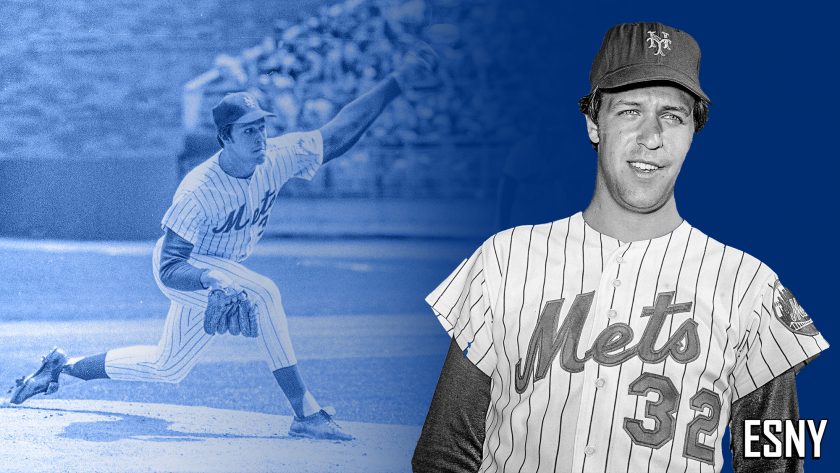Honoring New York Mets great Jon Matlack is long overdue

Honoring New York Mets great Jon Matlack is long overdue. The organization put an end to the mishap with his Hall of Fame induction.
[sc name=”rich-coutinho-banner” ]Stand up and applaud the New York Mets latest nostalgic effort. Three more players entering the team’s Hall of Fame—induction in May—is an extraordinary event, especially for those who witnessed the three in question.
Younger fans will recognize the names of Ron Darling and Edgardo Alfonzo, immediately, but it’s also tremendous that all Met fans will be able to stroll down memory lane and honor a pitcher who might be—aside from Jerry Koosman—the best southpaw in team history.
Watching him in my teenage years at Shea Stadium, Jon Matlack threw the cut fastball long before it ever became popular. He coupled that with an overhand curve that can only be described as the ultimate 12-to-6 pitch that frustrated hitters on a regular basis.
That 1973 team is often forgotten by Met fans, but in many ways, they carved out the same types of miracles the 1969 club put up regularly. Success that postseason is often filed away by many baseball experts because of their Game 7 World Series loss to the Oakland A’s.
But a pennant exists in the Met record books that year because of Matlack, who often gets forgotten thanks to names like Tom Seaver, Tug McGraw, Jerry Koosman, Rusty Staub and even Willie Mays.
But make no mistake about it: that pennant does not exist without the left arm of Matlack.
In the 1973 NLCS, the Met faced one of the best teams ever assembled—a Reds team with Pete Rose, Johnny Bench and Tony Perez, three of the best hitters in that era (or any era, for that matter). And after a tough loss in Game 1, despite an incredible Seaver outing, Matlack faced that tough lineup on the road and shut out that group to even the series at one apiece.
The Pete Rose/Bud Harrelson fight took center stage with Seaver winning a deciding Game 5 after Rose’s theatrics in Game 4, as he hit a game-winning homer the day after he tried to make this series a Wrestlemania-type event by taking on Harrelson in a brawl.
Pound-for-pound, that Matlack effort may have been the single-best pitched game in Mets history, considering what was at stake. In the World Series, he lost a tough Game 1 by a score of 2-1 as an infield error sealed his fate. But he rebounded nicely with a win in Game 4 evening the series at two. And had he won Game 7, I still think, to this day, he would have been named World Series MVP.
In the stretch run that year, Matlack teamed with Seaver and Koosman to pull the Mets out of last place on Sept. 1, leapfrogging the whole division as this trio of Met starters had an incredible final six weeks of the season. They clinched the NL East in Chicago after a series of rainouts that forced the Mets to play in a clinching game the day after the regular season was supposed to end.
I remember chatting with Tug McGraw at a Shea Old Timers’ Day and he described Matlack as the most devastating lefty he ever witnessed. When I mentioned to him he played with Steve Carlton as a Phillie, he said, “Matlack would be my man followed by Koosman and then Carlton in that order.”
[sc name=”lfgm-t-shirt” ]Matlack also pitched on a Met team that was offensively challenged, forcing them to carve out plenty of shutouts if the team was to have a successful season. Before most games, Met catcher Jerry Grote would tell him that if he pitched a shutout, he would promise him a tied game, Matlack once told me. Jacob deGrom understands exactly how Matlack felt.
His skill was undeniable, as his stuff commanded both sides of the plate, and his impeccable control limited baserunners every time he took the mound. And in September of that magical 1973 season, he dominated the big hitters in the league with his stuff.
There were many times during that stretch he faced a Pirate team the Mets were chasing and took Willie Stargell’s left-handed bat right out of that game. And the tough right-handed hitters in the division often took that long walk to their dugout while scratching their heads on how No. 32 dominated that plate appearance.
It will be great for older Met fans to get the chance to both fondly remember his left arm, and at the same time, share stories with younger Met fans. Understanding Matlack was a big part of that ’73 team that came within an eyelash of a trip up the Canyon of Heroes with a miracle year that nearly topped the 1969 effort is an important notion.
Congrats Jon Matlack on an honor that has been long overdue.






